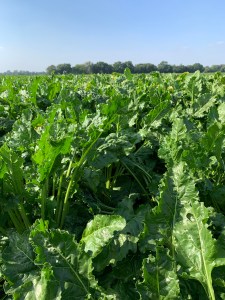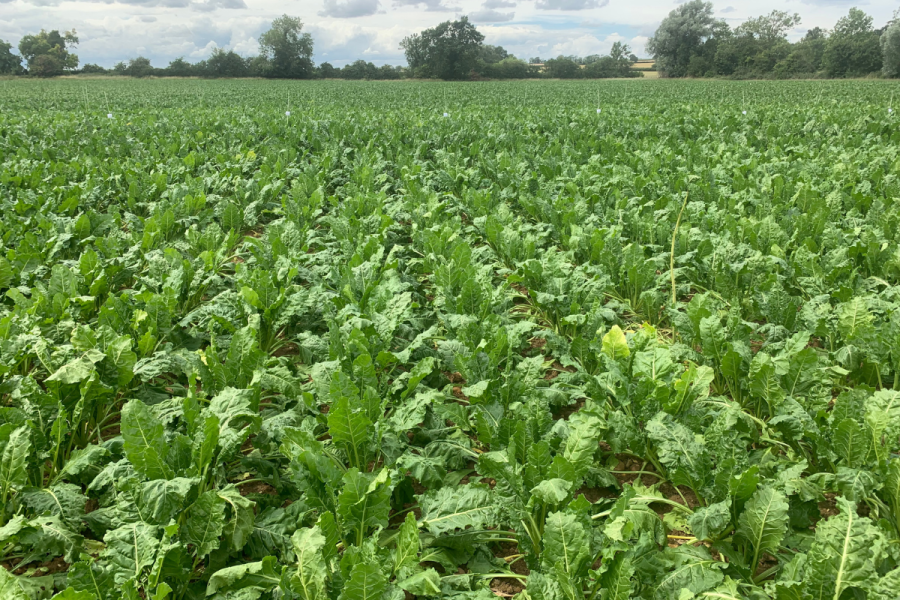Growing pressure to farm more sustainably and in-line with the environment has meant the buzz around biostimulants has only got louder. CPM takes a look at what some of these claim to do to enhance plant health and crop yields.
“The biochemical effect of higher levels of silicon in the plant reduces the feeding appeal for predating pests like aphids.”
By Rob Jones and Melanie Jenkins
An ever-increasing breadth of data is showing that applying supplementary silicon to field crops can boost a plant’s natural defence mechanisms. This can increase resilience to pests and disease, as well as improve nutrient use and yield quality, according to James Kennedy of Orion Future Technologies.

Silicon accumulation improves the physical strength and resilience of plants against attack by pests and diseases, says James Kennedy.
It’s a bold claim but one that’s underlined by data, explains James. “Research has shown that elevating silicon levels in a crop helps to strengthen the plant’s natural defences. Split field data has shown the benefit of applying plant available silicon to a wheat crop in Kent. Following four applications of a silicon biostimulants – Sirius – the treated wheat crop accumulated over 500mg/kg more silicon than the untreated crop, which increased the wheat’s health and resilience.
“The outcome at harvest was a consistently high yield which saw the treated sample weigh 0.3t/ha more than the untreated,” he says.
Although some silicon is available in the soil, this varies with soil types and overall soil health. Orion has developed a way to apply it as a foliar spray or seed treatment, which offers growers the opportunity to boost a crop’s silicon uptake. “Results across a variety of crops have demonstrated that applying silicon biostimulants is reducing losses and increasing yield,” adds James.
Silicon accumulation improves the physical strength and resilience of plants against attack by pests and diseases, he explains. “By improving the plant’s defence response, higher silicon levels can also help to reduce damage from aphids and fungi. And the biochemical effect of higher levels of silicon in the plant reduces the feeding appeal for predating pests like aphids. In addition, silicon increases the leaf cuticle thickness, enhancing the plants physical barrier to reduce the threat of fungal hyphae penetration or cabbage stem flea beetle.”
While the accumulation of silicon in the plant has shown yield benefits, trials have demonstrated this is due to a combination of silicon and other nutrients.
“In an accumulation study with KWS, we were able to establish that applying Sirius to different varieties of wheat (KWS Palladium, KWS Ultimatum, KWS Dawsum, KWS Zyatt and KWS Extase) helped increase the uptake of silicon. However, this also helped boost the uptake of nutrients such as calcium, copper, iron, magnesium, manganese, zinc, and nitrogen.”
The Sirius treated crop contained more than double the levels of calcium, magnesium, and manganese compared with the untreated. It also saw an increase in copper of more than 50%, he adds.

Increasing the availability of nutrients to a crop should help improve plant health and strength, but also add biomass which will carry through to harvest.
“Increasing the availability of nutrients to a crop will improve plant health and strength, but also add biomass which will carry through to harvest. Using a biostimulant doesn’t have a negative effect on the soil – a healthier crop that’s less dependent on inputs will also leave healthier soil for the next rotation.”
In a similar trial carried out in Brazil, silicon was applied to a wheat crop to improve resistance to bird cherry oat aphid (Rhopalosiphum padi). Silicon accumulated by the crop helped to create a barrier to aphids by triggering the jasmonic acid-dependent defence of the plant.
Because silicon only becomes available to plants in its monosilicic form, Orion has developed ‘iNHiB Technology’ that makes silicon available to the crops in this way to help mitigate plant stress, adds James.
“This formulation technology also allows products to be easily tank-mixed with plant protection products with no compatibility or efficacy issues. This makes their inclusion very convenient to growers wanting to apply silicon without making additional spray applications.”
With an ever-increasing number of crop protection products being withdrawn or failing to gain registration in the UK, and pressures to reduce chemical usage, it’s clear that the development of biostimulant solutions can help to reduce the reliance on traditional chemistry, he believes.
However, silicon biostimulants don’t seek to claim crop protection status and aren’t an alternative to pesticides, emphasises James. “Silicon biostimulants should be used as part of a sustainable pest and disease management strategy. Integrated pest management shows us that it’s necessary to consider as wide a range of solutions as possible to develop ways to control threats to our food chain and productivity,” he concludes.
This article was taken from the latest issue of CPM. Read the article in full here.
For more articles like this, subscribe here.
Sign up for Crop Production Magazine’s FREE e-newsletter here.




